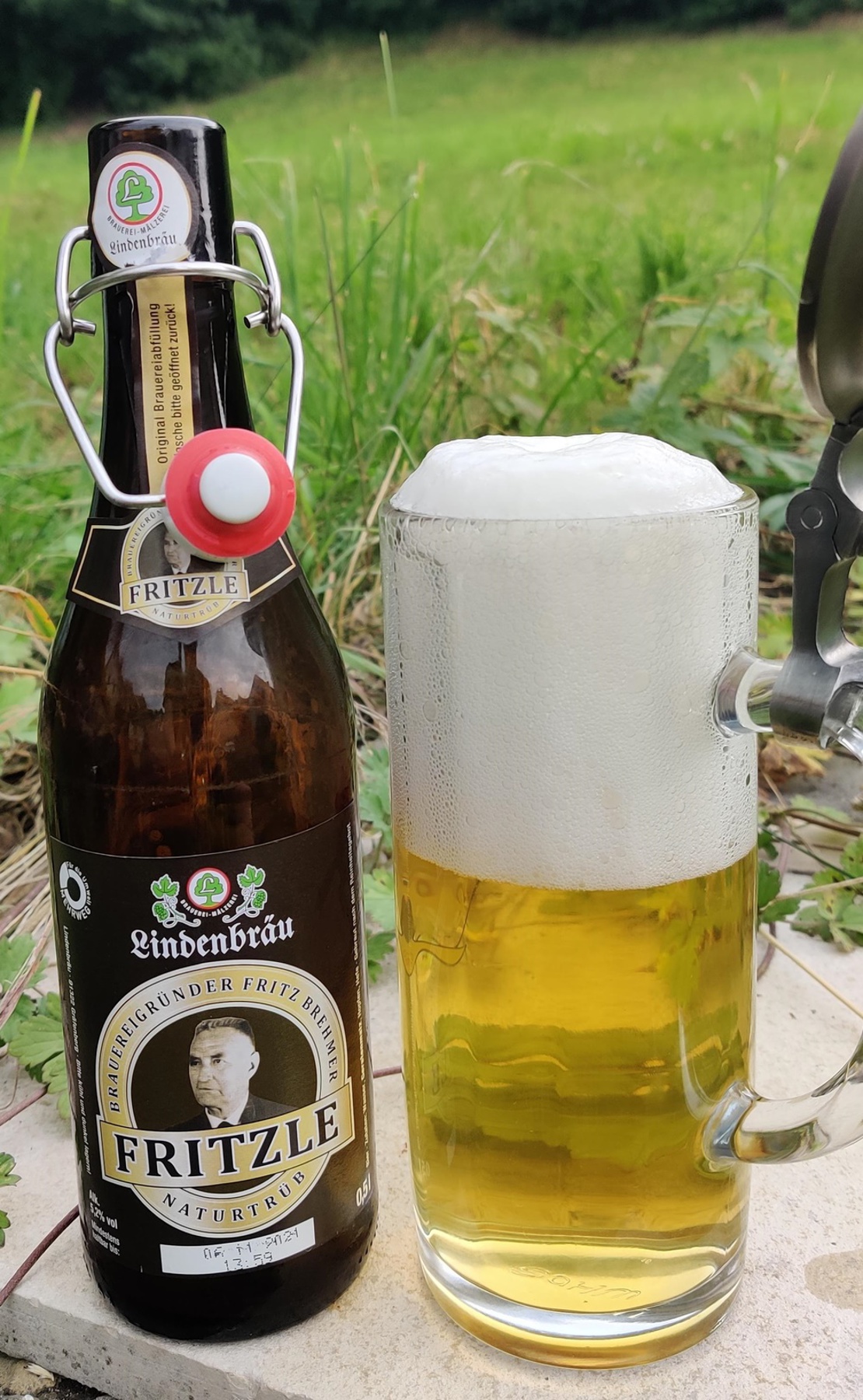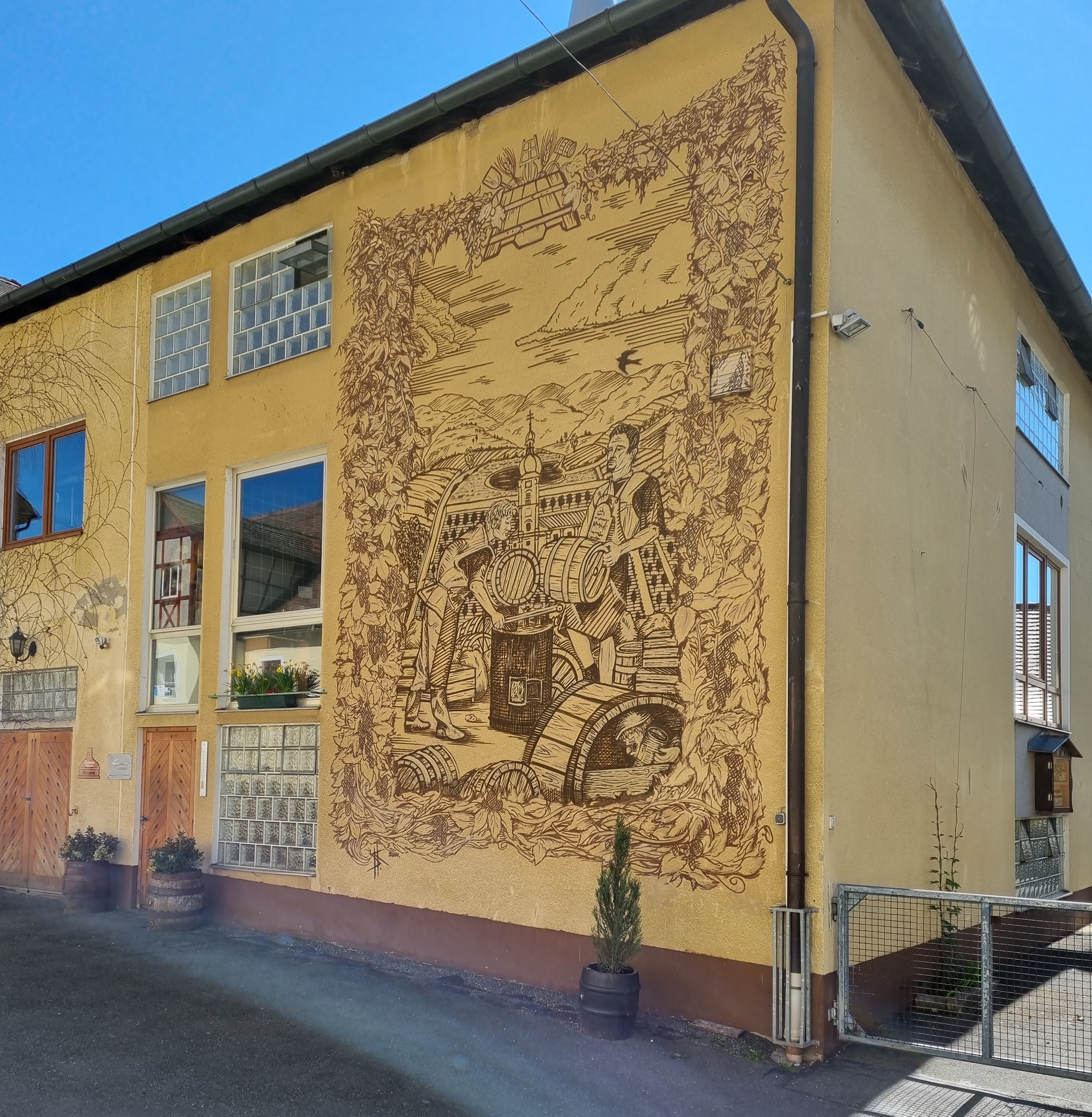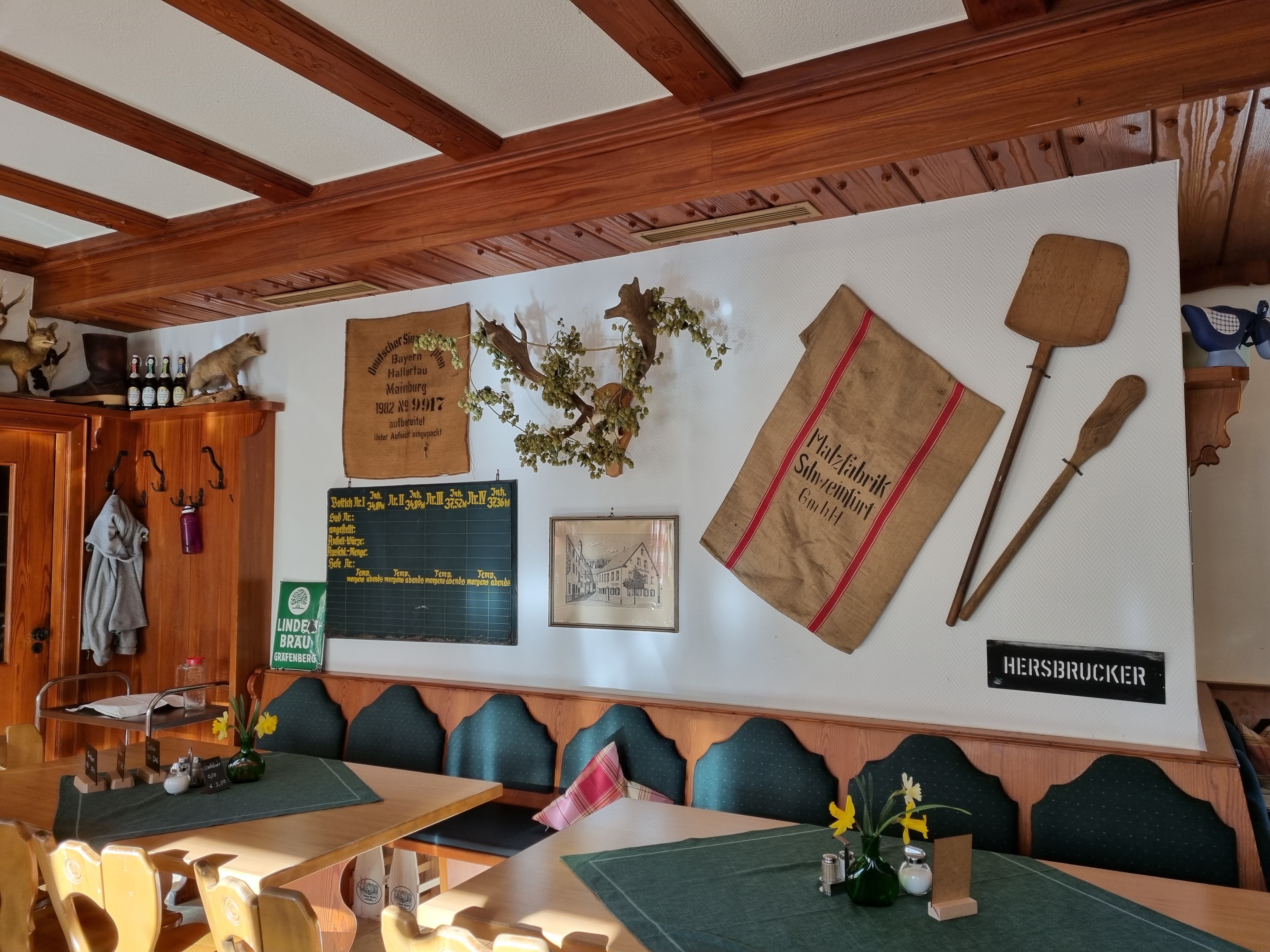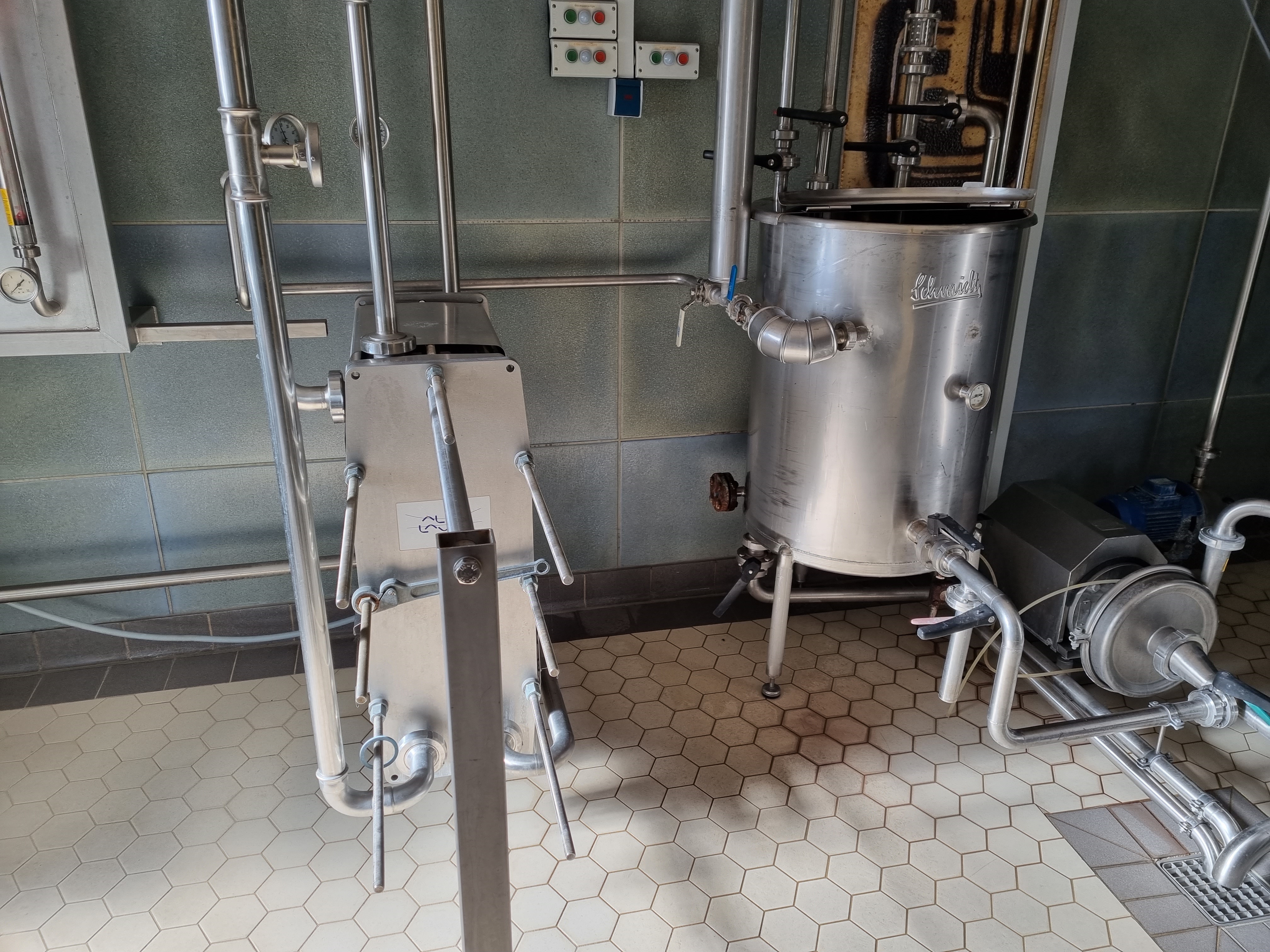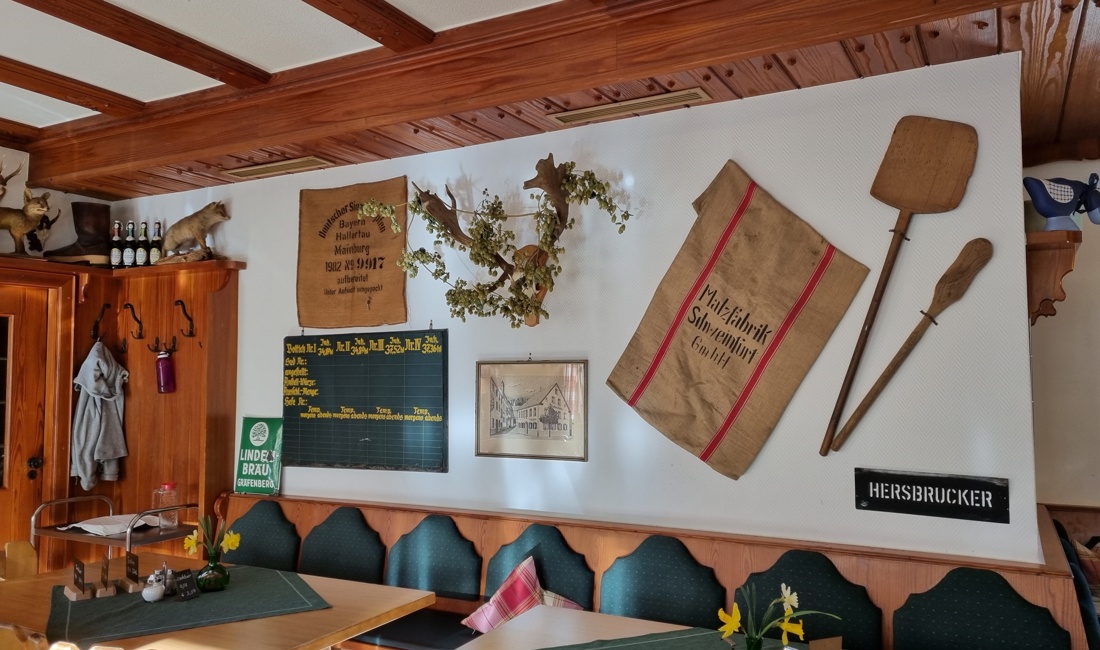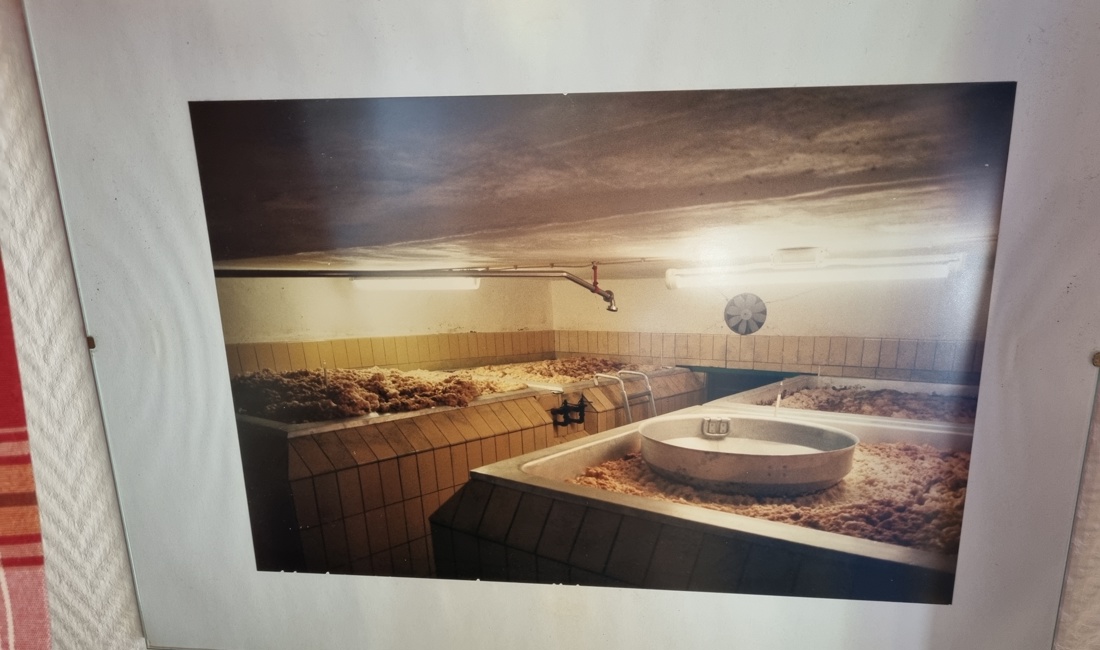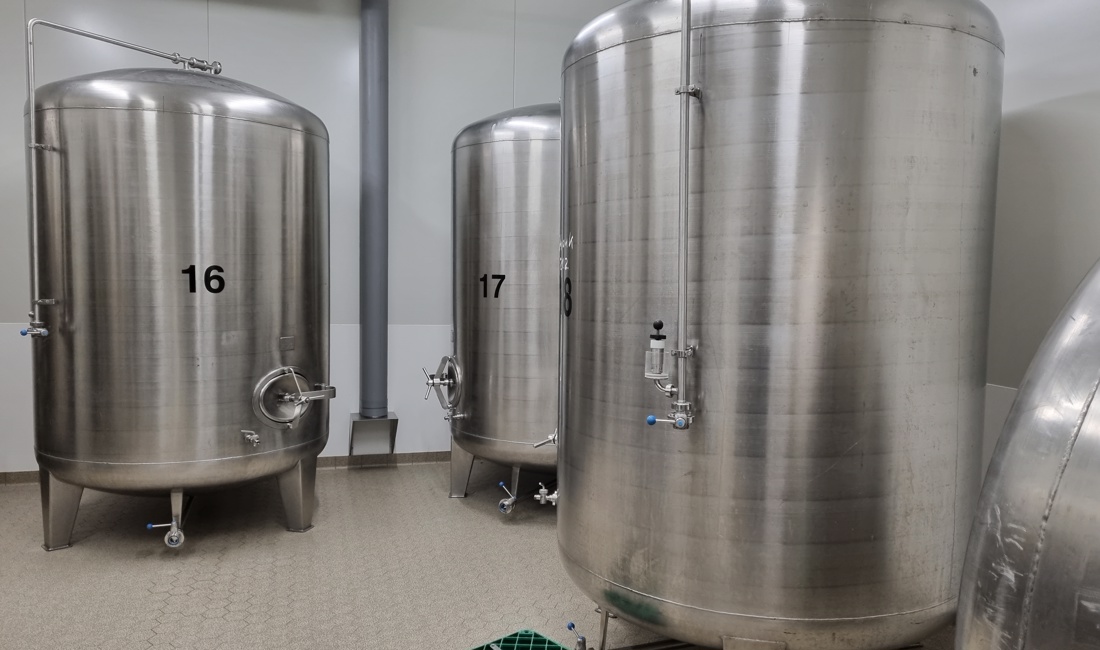The beers
Lindenbräu’s hop forward Zwickl/Kellerbier style beer called Fritzle showcases the advantages of their methods. Bearing the name after the founding father Fritz Brehmer, the style is somewhat unusual for Franconian breweries. Nonetheless, it is a beautiful beer with plenty of fresh aroma hops. I’ve had a few times by now and the appearance varies from cloudy to nearly clear. Depending on the freshness. The nose has notes of lemon, grapefruit, white peach and tangerines. Over the palate comes tangerines, light peach, biscuit malt and flowers. The bitterness is within pilsener range and more than enough to make it last, giving this beer a perfect balance. 4.6
Two of the other beers from their range are great examples of beers benefitting from the open fermentation and floor malting facility. Their malt forward amber coloured Vollbier (Vienna) and the Pilsener. The Vollbier has ripe fruit, rich malt flavours and light toffee backed up by floral hops. 100% Vienna malt, Hallertau tradition and Hersbrucker hops, smooth and richer than most I’ve tried within this style. You will often find it gravity dispensed at the Gasthaus, which is how this beer should be enjoyed. 3.9 The pilsner has crisp pilsener malt, light scents of honey, punchy, floral and grassy hops, leaving you thirsty for more. 4.1 Both clean, precise and unique terroir driven beers with a great malt presence.
